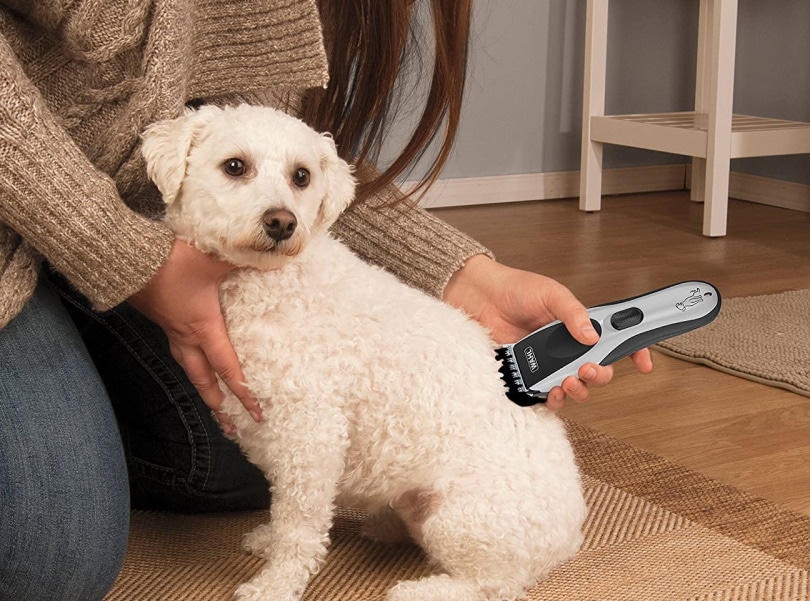Ever seen the phrase what the heckin dog and wondered what it means? This playful term has a whole lot of history behind it! Let’s break it down quickly, then dive into the deeper meaning.
What the heckin dog is how people express amusement and love for dogs online.
For Example: When my dog chases its tail, zooms around the house with its favorite ball, or does a hilarious action, I name them heckin dog moments.
It’s perfect for when a dog does something incredibly cute or hilarious. This phrase popped up in the early 2010s and became wildly popular. So, in other words, it is a funny dog meme.
People mostly use heckin dog to celebrate how awesome dogs are. But, sometimes you might see it used with a bit of sarcasm!
Table of Contents
ToggleThe Origins of What the Heckin Dog
Now that we’ve got the basics down, let’s dig a little deeper. How did this whole heckin dog thing blow up into today’s hilarious phenomenon? Well, keep reading, because it’s a delightfully silly story.
Start of What the Heckin Dog
The story of heckin dog begins with a hilarious – and slightly cringe-worthy – video. Ethan and Hila Klein, a famous YouTube couple known for their hilarious reaction videos, were watching a particularly odd clip when something magical happened. Hila misheard a phrase, and confused “what the heckin dog?” the reaction was the spark that lit the internet on fire. Unbeknownst to them, their genuine moment of confusion would soon become a beloved meme, spreading joy and laughter across social media platforms. Ready to meet the unsuspecting couple that started it all? Hang on, because this is pure internet gold.
The Rise to Fame
The internet pounced! The clip of Hila’s what the heckin dog endearingly confused reaction was shared, memed, and remixed with lightning speed. People started attaching it to any funny dog image – a clumsy pup tripping over its paws, a dog with a hilariously grumpy expression. Suddenly, it was everywhere! It quickly became a shorthand for canine-related cuteness and silliness. Dog lovers across Tumblr, Reddit, and beyond adopted the phrase, adding their own hilarious variations. It was no longer just about Hila’s original question, “what the heckin dog?” had become a way to express the joy that only dogs can bring.
The Power of What the Heckin Dog – Why We Love It
Let’s be real – there’s something extra funny about heckin dog. It’s not a real swear word, but you get the feeling! By replacing the harsher word with “heckin,” the phrase loses any aggressive edge and becomes pure good-natured silliness. This softer language makes it perfect for expressing our amusement and affection for our furry friends. And let’s not forget how the dog itself transforms into the ultimate stand-in for anything adorable or hilarious a dog does.
Decoding the Meaning of What the Heckin Dog
Honestly, who hasn’t said “Oh my freaking’ goodness” or a similar phrase like heckin dog, when something’s just too cute to handle? What the heckin Dog’ works the same way! It taps into that playful exaggeration, softening the surprise and making it more lighthearted. It’s the internet’s way of giving a big old affectionate head pat to all the good doggos out there.
Doggo Lingo & Its Charm
“heckin” is just the start! Doggo lingo is an adorable world of its own. Think “smol” for tiny pups, “boop” for nose touches, and “floof” for extra fluffy fur. Ever notice how we actually talk like this to our dogs? With those high-pitched voices and silly words? Doggo lingo is like an extension of that, and it taps into that same sense of joy and affection we feel for our furry friends. Plus, let’s admit it: there’s something deeply satisfying about the way these words roll off the tongue!
The Power of Memes and Merchandise
It turns out that a silly meme can have serious selling power! The heckin dog went from a funny phrase to a full-blown merch phenomenon. Think t-shirts with goofy dog faces, mugs with the phrase, even heckin dog toys! If you love dogs and a good laugh, there’s something out there for you. Why do people buy into this? Well, it’s a way to wear your love for dogs (and a good chuckle) on your sleeve. It’s also a fun way to signal to the world that you’re part of the internet’s dog-obsessed crowd.
“Heckin” Merch Mania
The merch world has embraced this meme with open arms! You’ll find t-shirts with phrases like “heckin good boy” alongside sleepy dogs, stickers of pups doing hilarious sploots, and mugs that declare your morning coffee a “heckin good brew.” The designs range from adorable to downright hilarious, guaranteeing there’s something to make any dog lover smile.
Community Connection
“Heckin” isn’t just about owning a funny t-shirt; it’s about belonging. Dog-centric corners of the internet, like those obsessed-with-corgis subreddits or pup-loving Facebook groups, are where this phrase truly thrives. Wearing or using “heckin” merch is like a secret handshake – it signals you understand the silliness and pure joy that dogs bring. And of course, it fuels countless meme variations and inside jokes, strengthening that sense of a shared community built around our love for furry goofballs.
Understanding Canine Communication
Turns out, what the heckin dog can lead to a whole new question: “I want to know what my dog is actually thinking!” The meme’s playful focus highlights all those hilarious and quirky dog behaviors, naturally sparking curiosity about what’s going on inside those furry heads. Understanding our canine companions does more than satisfy that curiosity; it’s the key to building an even stronger bond with our best friends.
1. Dog Body Language 101
Dogs may not speak our language, but their bodies say a whole lot! Let’s break down the basics of dog body language. Keep in mind, context is everything!
Reading Tail Talk: A wagging tail is often a happy sign, but the speed and position tell the full story. A high, fast wag usually means excitement, while a tucked tail can mean fear.
Ears to the Ground: Forward and alert? Your dog is focused! Droopy ears often signal relaxation, while ears pinned flat back can indicate fear or even aggression.
The Eyes Have It: Direct eye contact can be a sign of confidence or even a challenge, while a dog looking away or blinking a lot might be feeling uneasy.
Body Posture: A playful bow (front down, rear up) is an invitation to play! While a tense, hunched posture might mean your dog is feeling stressed or on guard.
2. Improving Your Bond with Dogs
Knowing how to read your dog’s signals is like learning a secret language. It lets you understand if they’re happy, nervous, or ready for some playtime. Think about how helpful this is during a vet visit (recognizing their anxiety), at the dog park (knowing when play is getting too rough), or even just during everyday cuddles! Understanding your dog leads to better communication and a deeper, more trusting relationship. After all, that bond is what makes having a dog so incredibly special.
Heckin Goes Global!
The infectious charm of what the heckin dog knows no borders. Like a mischievous pup let loose in a park, this phrase has bounded across the globe, leaving paw prints of laughter and canine-inspired silliness in its wake. From bustling city centers to quaint countryside villages, the universal love for our furry companions has made this meme a worldwide phenomenon.
1. The Worldwide Wag
It turns out, the playful confusion of what the heckin dog isn’t exclusive to English speakers. Across different languages and cultures, the phrase has been adapted, remixed, and embraced with a wag of enthusiasm. In France, you might hear a surprised “Quel est le sacré chien?” echoing through the streets. Spanish speakers might exclaim, “¡Qué diablos perro!” with raised eyebrows. These variations capture the same spirit of lighthearted amusement while adding a touch of local flavor. After all, a bewildered dog’s head tilt transcends any language barrier!
2. Global Doggo Communities
The internet has become a vast playground for dog lovers, and those smitten with the “heckin” lingo have created thriving online communities that span the globe. On platforms like Reddit, countless subreddits dedicated to specific breeds or dog-centric humor are havens for sharing what the heckin dog memes and inside jokes. These spaces aren’t just about the phrase itself; they are digital dog parks where people worldwide bond over their shared adoration for their four-legged friends. Whether it’s a corgi enthusiast group in the UK or a Dachshund fan club in Germany, these online communities find unity in the playful absurdities of this viral catchphrase.
3. The Joy of Silliness
The global reach of heckin dog speaks to something deeper than just a funny meme. It’s a testament to the universal love for dogs and the way their joyful antics can transcend cultural differences. It also highlights the internet’s remarkable ability to connect people through a shared sense of humor. Whether you’re in a bustling metropolis or a rural village, chances are you’ve witnessed a dog do something that made you smile (or even exclaim, What the heckin dog?!). That shared experience, those moments of uncomplicated joy inspired by our furry companions, are what make this meme resonate globally.
4. Beyond the Phrase
The legacy of this canine catchphrase extends beyond the online communities and viral videos. It’s made paw-shaped ripples in the world of merchandise, with adorable “heckin” slogans adorning t-shirts, mugs, and even dog toys across borders. The heckin dog inspired fashion and products can be found in online stores throughout Europe, Asia, and beyond. Wearing a “heckin good boy” shirt in Tokyo or sipping coffee from a “heckin good brew” mug in Paris demonstrates that you’re a member of a global club – one that celebrates the unbridled joy and wholesome silliness that dogs bring to our lives.
The global embrace of what the heckin dog is a delightful reminder that laughter knows no language. It’s a testament to the power of the internet to unite us through shared fascinations, even the seemingly frivolous ones. And at its core, it’s a celebration of the universal love for our four-legged companions – those furry goofballs who brighten our days, inspire endless memes, and remind us of the simple joys in life.
The Evolution of a Meme
Like a playful puppy rolling around and discovering new tricks, the phrase “what the heckin dog” didn’t remain static. From its humble beginnings, it blossomed into a full-fledged meme family, complete with quirky cousins, playful pups, and a whole lot of adorable variations. This evolution mirrors the creativity and boundless energy of internet communities, transforming a simple phrase into an entire lexicon of canine-inspired communication.
1. From Catchphrase to Culture
It all began with the innocent charm of “What the Heckin Dog”. However, the internet, in its mischievous brilliance, quickly realized that the formula could be remixed endlessly. Soon, dogs weren’t just “heckin,” they were rocking “heckin snoots” (noses), sporting “heckin floofs” (fluffy fur), and performing “heckin sploots” (those hilarious belly-up stretches). Each new variation added a layer of delight, creating a shared language that celebrated every aspect of dog-dom in the most endearingly silly way.
2. The Joy of Wordplay
Think of doggo-speak as a linguistic playground. The softening of words, the exaggeration, the emphasis on the most adorable dog traits – it all taps into something delightful in our brains. It’s as if we revert to a childlike state of wonder when describing our furry companions, and that sense of playfulness is infectious. The success of these memetic mutations lies in their ability to make us grin from ear to ear, their simplicity, and the way they perfectly express our pure, unfiltered affection for dogs.
3. Psychology of Cute Dogs
Why do we find these phrases so irresistibly charming? Science offers some clues. Studies on the psychology of “cute” suggest that baby-like features, like big eyes and soft, rounded shapes, trigger a nurturing response in our brains. The language of “heckin dog” and its variations mimic that same sense. The exaggerated words, high pitch, and focus on soft, endearing qualities tap into that same part of our brains that lights up when we see a puppy. It’s no wonder we find this language so satisfying – it’s almost like we’re hardwired to love it!
4. Beyond the Silliness
The evolution of this meme highlights the remarkable power of the internet to shape language and culture. What began as a funny saying in a single video became a building block for an entire mode of communication. Doggo lingo demonstrates how collective creativity can take something simple and turn it into a cultural phenomenon, a form of linguistic currency readily understood by a passionate community.
While it’s easy to focus on the frivolous nature of internet memes, they hold surprising depth. The enduring popularity of the heckin dog and its playful variations speaks to a fundamental human desire for connection, lighthearted expression, and a shared appreciation for the creatures that bring so much joy into our lives. It’s a testament to the way humor can unite us through a playful distortion of everyday language – and a reminder that celebrating the simple things, like a goofy dog sploot, can be a powerful antidote to the complexities of the real world.
5. A Linguistic Legacy
The legacy of what the heckin dog lives on in the way it has expanded our vocabulary of affection. It has given us a language to express the joy that dogs bring us, a way to connect with fellow dog lovers, and a reminder that a dash of silliness goes a long way. So the next time you see a dog doing something that inspires an affectionate chuckle, let a little “heckin” slip – you’ll be partaking in a joyous evolution of language, born from the internet’s boundless love for our canine companions.
Beyond the Canine: Heckin Breaks Free
The infectious energy of what the heckin dog proved too potent to be contained within the realm of canine memes. Like an excited puppy escaping its backyard, the word “heckin” took on a life of its own, becoming a versatile catchphrase used to express surprise, delight, or playful emphasis about anything remotely positive. This linguistic leap demonstrates the enduring power of memes to not just entertain us, but to shape the way we speak.
1. Not Just for Doggos
Across social media platforms, heckin has shed its exclusively dog-related associations. You might see a photo of a majestic mountain range with the caption “That’s one heckin view!” or a video of a baby taking their first steps accompanied by “What a heckin milestone!”. The word has become a lighthearted intensifier, a way to inject a dash of silliness and warmth into everyday communication.
Let’s take a closer look at a few non-doggo examples of how heckin is used in the wild:
Celebrating Small Wins: “Finally finished my term paper! That was a heckin tough assignment.”
Food Enthusiasm: “These cookies are heckin delicious!”
Pop Culture References: “Did you see the latest Marvel movie? That fight scene was heckin awesome!”
Self-Deprecating Humor: “Woke up late again… I’m a heckin mess.”
2. Why it Works
The beauty of heckin as a general intensifier lies in its inherent positivity and playful absurdity. It’s a gentle way to exaggerate without coming across as aggressive or overly dramatic. It taps into the same sense of innocent fun that made the original doggo meme so beloved. By using “heckin”, we add a touch of whimsy to our online interactions, signaling that we don’t take ourselves too seriously.
3. Meme Evolution and Internet Slang
The mainstreaming of heckin speaks to the fascinating ways in which the internet influences our language. Often, phrases born from specific memes take on a broader cultural significance, becoming part of the ever-evolving internet slang that binds communities together. Similar to how “lol” (laughing out loud) went from an acronym to a versatile expression of amusement, “heckin” has transcended its original context.
4. Impact on Everyday Speech
While mostly confined to online spaces, the influence of “heckin” on our language is undeniable. It’s particularly popular among younger generations, for whom internet culture heavily shapes their communication styles. You might even hear it slip into casual conversations with friends, a playful nod to the digital world where the word found its widespread fame.
5. The Power of Positivity in a Meme
In an online landscape often rife with negativity and cynicism, the rise of “heckin” as a general expression is, perhaps surprisingly, refreshing. It’s a reminder that memes can be forced for good, injecting levity and simple joy into our communication. “heckin” serves as a playful linguistic tool to spread lightheartedness, celebrate the mundane, and foster connections across the digital divide.
Doggos in Pop Culture
The infectious charm of what the heckin dog has transcended the online meme-sphere, its furry tendrils reaching into various corners of pop culture. From children’s books filled with silly dog antics to celebrity pet accounts that playfully sprinkle in doggo lingo, the influence of this simple phrase is surprisingly far-reaching. This expansion highlights the ability of memes to not just make us laugh, but to shape the way we tell stories and connect with beloved animals.
1. Doggo Lingo Goes Mainstream
One of the most noticeable impacts is the rise of children’s books and media that playfully embrace doggo lingo. This trend recognizes a shift in how a younger generation interacts with the world. Authors and illustrators cleverly weave phrases like “heckin snoot,” “boop,” and “floof” into their stories, often featuring dogs as protagonists. These works tap into children’s innate love of dogs, their fascination with silly sounds, and their burgeoning connection to the online world where this language thrives.
Here are some examples to illustrate this:
Picture Books: Titles like “This Dog is a Squelch” or “My Dog has the Zoomies!” use words derived from meme culture to make stories relatable and fun.
Early Reader Chapter Books: Series focused on dog characters might use doggo lingo in the narration or dialogue to add a touch of humor and appeal to young readers.
Educational Media: Even subtly, shows aimed at toddlers may use words like “boop” in songs about animals, normalizing this playful language as part of learning about our furry friends.
2. Celebrity Pets & the Power of the Meme
The world of celebrity culture hasn’t escaped the “heckin” charm either. Many celebrities with beloved pets have embraced the doggo lingo trend in their social media posts. Whether it’s captions describing their dogs’ funny quirks or sharing memes related to the “heckin dog” phenomenon, these high-profile accounts further normalize the language and bring it to a broader audience. When a pop star tweets about their “heckin good boy,” the phrase loses some of its niche internet status and gains wider cultural recognition.
3. The Merch Factor
Beyond social media, the influence of “what the heckin dog” is tangible in the world of merchandise. Major retailers now carry clothing with doggo-lingo slogans, alongside mugs, plush toys, and a myriad of dog-related products infused with the playful language of the meme. This demonstrates both the commercial power of internet trends and the enduring popularity of everything dog-related.
4. The Debate: Influence or Appropriation?
It is important to note that not everyone views the permeation of doggo lingo into mainstream culture as purely positive. Some argue that it oversimplifies our understanding of animal communication and disrespects the true complexities of canine behavior. Others see it as a form of cultural appropriation by non-dog-community members, using the language without a genuine understanding of its origins. This debate highlights an important consideration when examining the broader impacts of memes in the real world.
5. Doggo Lingo Explains Itself
Whether viewed as harmless fun or an oversimplification, the mainstreaming of doggo lingo illustrates a significant truth: our canine companions have become powerful cultural icons. Dogs are not just pets; they’re sources of joy, humor, and endless inspiration – even for the way we use language. The “heckin” phenomenon reflects this status, reminding us that the influence of our furry friends extends beyond our homes and into the stories we tell, the products we buy, and how we express ourselves online.
While not every aspect of meme-inspired culture may have lasting depth, the success of what the heckin dog is undeniable. It’s a testament to the powerful connection between humans and their dogs, a connection that continues to shape our language, entertainment, and collective fascination with these beloved creatures.
The Debate: Is it Good for Dogs?
Amidst the laughter and shared adoration inspired by “what the heckin dog”, a question lingers: As doggo-lingo becomes more mainstream, could it have unintended consequences on our understanding of dogs? It’s a discussion worth having, as it encourages us to enjoy internet humor responsibly while still prioritizing our dogs’ well-being and respecting the complexities of canine communication.
1. Potential for Misunderstanding
One concern voiced by some dog lovers and behaviorists is that the over-simplification of dog language inherent in memes might actually make it harder for people to understand their canine companions. While terms like “boop” and “floof” are affectionate and playful, they obscure the nuances of real dog body language. A wagging tail, after all, can indicate excitement, anxiety, or a multitude of other emotions – not just a generic “happy.”
Let’s consider a few examples of where this might lead to confusion:
Misinterpreting Signals: Someone unfamiliar with dogs might see a tense dog with pinned-back ears and describe it as a “heckin scaredy pup,” undermining the seriousness of the situation.
Missing Subtle Cues: Focusing on meme-worthy behaviors (zooms, sploots) might distract from the quieter signals dogs use to communicate discomfort or need.
Well-Meaning Mistakes: Owners wanting to connect with their dogs in a fun way might inadvertently reinforce unwanted behaviors if they misinterpret cues and only use doggo lingo playfully.
2. Experts Weigh In
Many dog trainers, behaviorists, and veterinarians advocate for clear, science-based communication when it comes to understanding our pets. While acknowledging that the “heckin” meme is mostly lighthearted, they might express concerns about it becoming a substitute for learning about true canine body language.
A quote from a reputable source (a dog behavior expert or scientific study) could effectively emphasize this point within your article.
3. The Importance of Balance
Does this mean we should banish the heckin dog from our vocabulary, for fear of misunderstanding our dogs? Absolutely not! The meme, at its core, is about celebrating our love for dogs. The key, as with most things in life, is moderation and balance.
Here’s how to responsibly enjoy doggo lingo without it harming our canine connection:
Learn the Real Language: Make understanding true dog body language a priority. There are numerous online and offline resources to learn the subtleties of tail wags, ear positions, and various postures.
Context is Key: Reserve “heckin” and its variations for moments of pure silliness and playful affection. Don’t use it to describe serious situations or your dog’s genuine anxieties.
Share the Knowledge: If friends or family use doggo lingo, playfully introduce them to the basics of real dog communication. This spreads awareness without sacrificing the fun.
4. The Power of Laughter, the Power of Learning
The “what the heckin dog” phenomenon isn’t about replacing our understanding of dogs; it’s about expressing pure joy about them in a unique way. Like all good memes, it reflects aspects of our culture and offers opportunities for both joy and thoughtful discussion.
By acknowledging the potential downsides and focusing on responsible enjoyment, we can use this meme as a reminder that love for our dogs is best expressed in many ways. Silly voices and meme-speak can absolutely be part of that, alongside a strong foundation in understanding their true language – the wagging tails, gentle eyes, and loyal companionship that make the human-canine bond so special.
Final Thoughts: The Legacy of What the Heckin Dog
From a misheard phrase to a worldwide phenomenon, the story of “what the heckin dog” is a testament to the power of dogs to make us laugh, connect, and even shape the way we speak. What began as an amusing reaction video gave birth to a language of playful affection, a tool to express our unfiltered joy for all things doggo.
Beyond brightening timelines, what the heckin dog sparked a global conversation about how we understand our furry companions. It reminds us that the internet, with all its silliness, can sometimes lead to insights into our own behavior. The popularity of doggo-speak reflects our fascination with canine behavior and the desire to connect on a deeper level with our loyal, floppy-eared friends.
The meme has stretched far beyond its humble beginnings. While some might argue its overuse dilutes our understanding of dogs, it has undeniably become a cultural force for good. “Heckin” and its variations are now shorthand for positivity, playfulness, and a celebration of all things dog. It’s woven into the fabric of dog-centric communities, bringing laughter and a sense of belonging. Its influence even reaches into children’s literature and pop culture, demonstrating the undeniable power of a well-timed what the heckin dog.
Whether you’re a dog-obsessed fan of the original meme, an advocate for clear canine communication, or someone simply amused by the internet’s endless quirks, what the heckin dog has left its paw prints across our vocabulary and our hearts. It’s a reminder that sometimes, the most profound connections – even a human’s connection with their dog – can be sparked by the simplest and silliest of things









